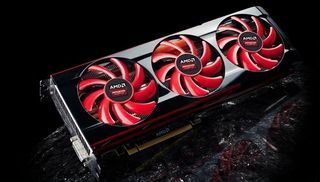How AMD's hardware in next-gen consoles will affect PC gamers

We've known AMD are the go-to guys for next-gen console silicon for a good while now. The tech press has been speculating since the consoles' specs were first announced as to how the PC could benefit from Sony and Microsoft opting for the x86, and specifically AMD, architecture. After all the Xbox 360 was running AMD graphics hardware and, from my perspective, the benefits to the PC from that relationship are pretty intangible at best. There are signs that things may be different this time around.
"The consoles are really the target for a lot of the game developers, if it's a Radeon heart powering that console, like the PS4 or Xbox 360, that means these games devs are going to be designing their games, designing their features and really optimising for that Radeon heart" said AMD's Devon Nekechuk around the launch of the Radeon HD 7990. But why, specifically, will that be the case? I asked AMD's worldwide manager of ISV gaming engineering, Nicolas Thibieroz for the nitty gritty.
“We paid a lot of attention to the DirectCompute processing capabilities in the GCN architecture because we know that this can enable all kinds of features, from physics simulations to advanced lighting schemes. Now those capabilities are going to be the baseline development platform for a lot more developers and we know that this is an area developers will explore more and more.”

That's potentially good news for the minority of gamers running GCN-based graphics cards in their PC, but what about the larger percentage of folk running Nvidia-based GPUs? The Kepler generation spent much of its silicon focusing on traditional rendering power, eschewing the compute-focus they had with the Fermi architecture.
In terms of DirectCompute power then the GCN cards are a good bit quicker. Given that devs are likely to be looking at the GPU in the next-gen consoles for more general purpose computing, I think it's likely we'll see Nvidia ensuring the new Maxwell architecture has some serious compute chops.
But it's not just the GPU that's going to make a difference for gamers going forward, the x86 CPU base could arguably be more important.
“The CPU portion of current generation consoles were all PowerPC-based, or hybrids of that. However, the Playstation 4 is multi-core x86-based, bringing a much closer correlation to PCs. With an 8 core chip, this will result in game titles needing to be even more multi-core aware to get the best performance, which mirrors the direction AMD has taken with its FX series of CPUs.”
PC Gamer Newsletter
Sign up to get the best content of the week, and great gaming deals, as picked by the editors.
Coding good multi-threaded games is notoriously difficult, but with weak individual cores to work with in the next-gen hardware devs are going to need to go down that route to really take advantage of the silicon. And the possibility of efficiently multi-threaded games plays directly into AMD's hands.
Intel's CPUs, like the latest Haswell chips, are monsters when it comes to single-threaded power and that's been the most important metric for gaming CPUs. And that has historically meant that a resolutely quad-core i5 can hose an octo-core AMD CPU, with double the thread count, in games.

That situation switches around if you look at multi-threaded performance on the PC. An eight-core AMD FX-8350 is well behind an equivalently priced i5 CPU when you talk gaming, but in multi-threaded benchmarks the target shifts up and that AMD chip is capable of trading blows with a far more expensive, eight-thread i7 CPU.
If devs can get their game engines running efficiently across multiple threads then the more value-oriented AMD chips, even down to the six-core £100/$140 CPUs, are going to be able to suddenly offer serious gaming chops.
And you've got to hope then the i5 chips suddenly get some HyperThreading love and we see Intel innovating a little more on the mainstream with six and eight-core chips. Personally I'd love to see an octo-core Broadwell in my Z97...

Dave has been gaming since the days of Zaxxon and Lady Bug on the Colecovision, and code books for the Commodore Vic 20 (Death Race 2000!). He built his first gaming PC at the tender age of 16, and finally finished bug-fixing the Cyrix-based system around a year later. When he dropped it out of the window. He first started writing for Official PlayStation Magazine and Xbox World many decades ago, then moved onto PC Format full-time, then PC Gamer, TechRadar, and T3 among others. Now he's back, writing about the nightmarish graphics card market, CPUs with more cores than sense, gaming laptops hotter than the sun, and SSDs more capacious than a Cybertruck.
Most Popular







